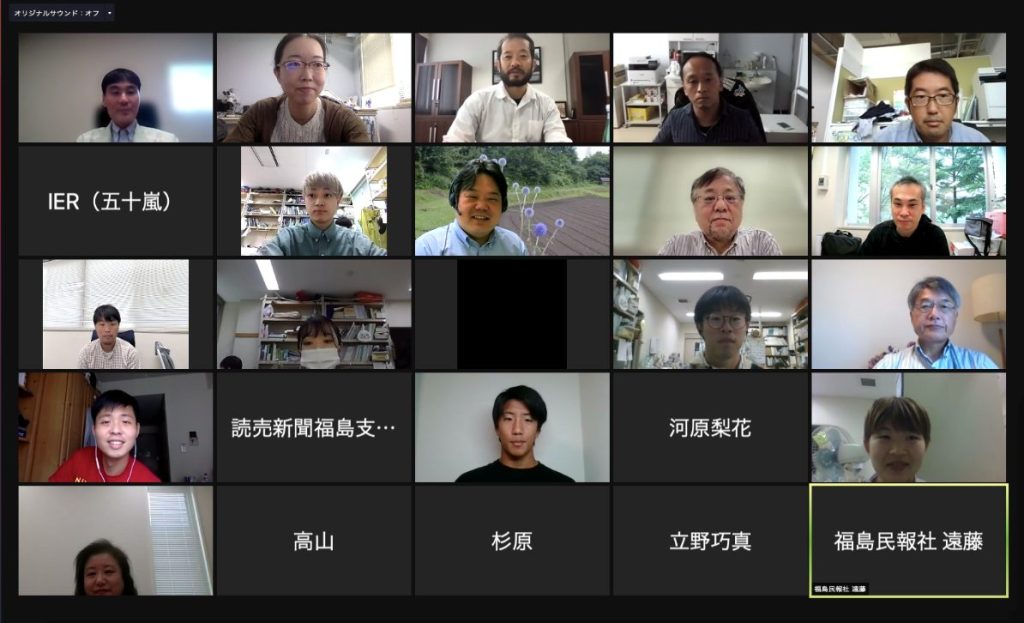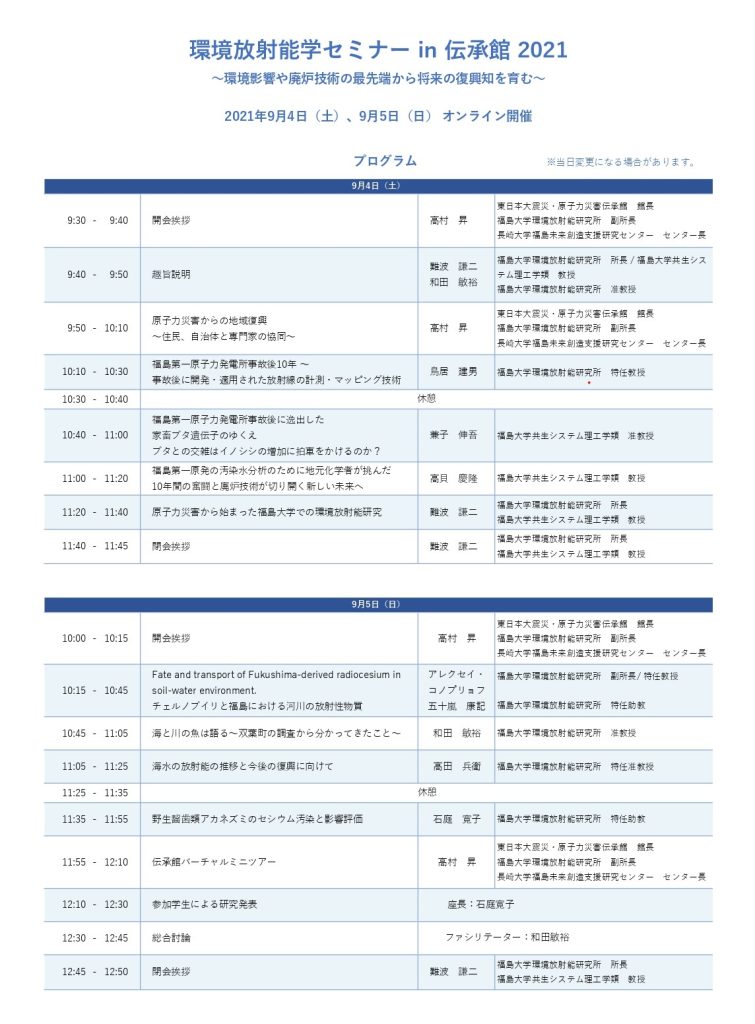September 4 and 5, 2021 We held an “Environmental Radioactivity Seminar in Densho-kan” online.
Date & Time
Sat. September 4 and Sun. September 5, 2021
Venue
Online (Zoom) and a live broadcast from Densho-kan (the Great East Japan Earthquake and Nuclear Disaster Memorial Museum)
On September 4 and 5, Institute of Environmental Radioactivity (IER) held an “Environmental Radioactivity Seminar in Densho-kan (the Great East Japan Earthquake and Nuclear Disaster Memorial Museum)” just like last year. It was organized as part of the human resource development project of Nagasaki University adopted under the Fukushima Innovation Coast Framework. The seminar was held in collaboration with Nagasaki University, and the programs on September 5 were live-streamed for attendees of a separate event of Nagasaki University. It was attended by 24 students that are from the Major in Environmental Radioactivity of the Graduate School of Symbiotic Systems Science and Technology of Fukushima University, Faculty of Symbiotic Systems Science of Fukushima University, and National Institute of Technology, Fukushima and Toyama Colleges, etc.
The seminar was originally planned to be held at Densho-kan in Futaba Town in Fukushima Prefecture, and it included a tour of the interim storage facility and areas around Futaba Station. However, in light of the current situations of COVID-19, it was changed to an online seminar.
During the two-day seminar, IER researchers made presentations on decommissioning technologies and impacts of the nuclear power plant accident on the surrounding environment, in accordance with the seminar program. A question and answer session was made after each presentation and active discussions took place among researchers and attendees. The director of Densho-kan, Dr. Noboru Takamura, who also serves as a professor of Nagasaki University and Vice Director of the IER, introduced their duties and efforts. In the virtual tour of Densho-kan, he introduced a fire engine that was destroyed by Tsunami and some signs that had been displayed in the town until the nuclear accident. In the end of the program, two master’s students of the Major in Environmental Radioactivity made presentations on their research activities and all students attended made and exchanged their comments. Through the lively interaction among speakers and attendees, we were able to share the issues to be addressed toward the decommissioning of FDNPP and restoration of the surrounding environment.
We are planning to hold a tour of coast areas of Fukushima in the near future which we hope will allow students to see and better understand the real situations.


